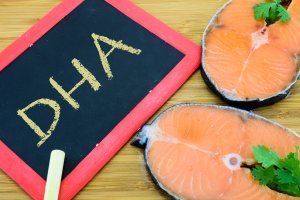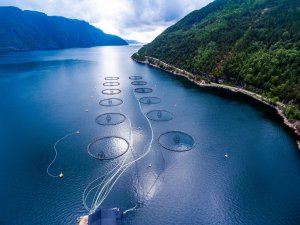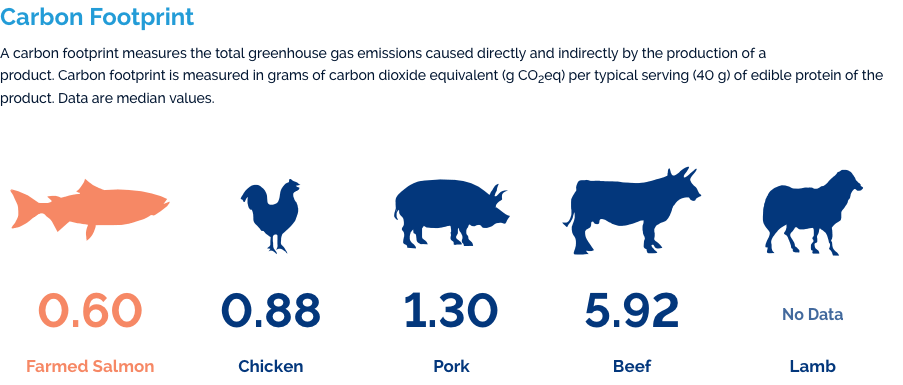This article was published in Chinese in FishFirst in its September 2020 edition
Salmon has become an increasingly popular product especially in Northern Europe, where consumption is the highest compared to other parts of the world. It is even interesting to note that raw salmon, which today may be one of the most ubiquitous ingredients on any plate of sushi, wouldn’t have been served on a sushi platter in Japan some twenty years ago. Times have changed: Japan imported 34,000 tons of salmon in 2016, according to the Norwegian Seafood Council.
Excellent nutritional profile
 Such an interest can be explained by the nutritional profile of salmon being one of the richest sources of long chain omega-3 fatty acids (EPA and DHA). Humans get EPA and DHA primarily through eating fish and today, we already face a dramatic omega-3 shortage, which needs to be filled in in order to balance omega-6 intakes: as explained by Prof. Doug Tocher, from the Stirling University: “In the last century or so, industrial agriculture and the rise of vegetable oils has seen a huge shift in this balance with dietary omega-6 now exceeding omega-3 by over twenty-fold resulting in many metabolic conditions. Dietary fish oil rich in omega-3 long-chain polyunsaturated fatty acids has beneficial health effects by mitigating the excess dietary omega-6 and restoring this balance”.
Such an interest can be explained by the nutritional profile of salmon being one of the richest sources of long chain omega-3 fatty acids (EPA and DHA). Humans get EPA and DHA primarily through eating fish and today, we already face a dramatic omega-3 shortage, which needs to be filled in in order to balance omega-6 intakes: as explained by Prof. Doug Tocher, from the Stirling University: “In the last century or so, industrial agriculture and the rise of vegetable oils has seen a huge shift in this balance with dietary omega-6 now exceeding omega-3 by over twenty-fold resulting in many metabolic conditions. Dietary fish oil rich in omega-3 long-chain polyunsaturated fatty acids has beneficial health effects by mitigating the excess dietary omega-6 and restoring this balance”.
The global farmed salmon industry developed at an experimental stage in the 1960s and became an industry later, in the 1980s and 1990s. It is expanding quickly to meet the growing demand, with the support of international organisations such as the United Nations’ FAO, which consider both its highly nutritious profile and its low environmental print. This profile makes it an ideal product to feed the world. Today, the farmed salmonid production (3.2 million tonnes in 2017 – IFFO figures) is mainly represented by two countries, Norway and Chile (over 2 million tonnes), followed by the UK, Iran, Canada, Turkey, Faroe Islands, Australia, Peru and the USA.

Low environmental impacts
Today approximately 60% of the world’s salmon production is farmed. The way salmon species are fed enables to produce as much farmed salmon than it uses fish in feed. This is the “Fish as feed” report’s main findings (Bjorn Kok of Utrecht University), based on a method using the principle of economic allocation (economic Fish In: Fish Out – eFIFO). According to the Global Salmon Initiative (GSI) organisation, the feed conversion ratio (FCR), which measures the efficiency with which the bodies of livestock convert animal feed into the desired output, is much better in the case of farmed Atlantic salmon than the one from terrestrial livestock: between 1.2 and 1.5 whereas chicken’s FCR is 1.7 – 2, pork is 2.7 – 5 and cattle is 6 – 10. The carbon footprint of farmed salmon is 0.60 whereas chicken’s is 0.88, pork’s is 1.30 and beef’s is 5.92.

Source: Global Salmon Initiative
Salmon farming helps understand the science behind aquaculture
Aquaculture is one of the most eco-efficient ways of producing protein. Fish oil and fishmeal remain important and strategic ingredients in salmon farming. Business strategies have led to evolving rates of inclusion of fishmeal and fish oil, but the bottom line is that fishmeal and fish oil provide an unmatched nutritional package to farmed salmon, which are then passed on to humans.
This science is important in the context of declining marine ingredient inclusions in aquafeeds.
Today, an increasing amount of salmon feed comes from byproducts. Salmonids are reliant on fishmeal and fish oil in their feeds, and the latter are increasingly (33% currently) produced from recycled by-product and waste from fish processing.
Scientists have been observing the impacts of changing diets on salmonids and their findings have comforted salmon farmers in the idea that fishmeal and fish oil were still to be considered strategic ingredients. Researchers from Nofima, the Norwegian research organisation, reported in 2019 that the barrier tissue of salmon is affected by zinc and omega-3 levels in feed. The aim of this research was to investigate whether changes in feed composition would affect the health and robustness of farmed salmon, and the scientists looked specifically at the interaction of zinc and marine source omega-3 fatty acids in feed. The integrity of salmon skin, intestine and gill tissues is vital for the health of the fish. These barriers are recognised as important first lines of defence against pathogens, as well as being important in helping the organism handle physical stressors.
Farmed salmon is still a young industry but its innovative profile and its contribution to feeding the world with an exceptionally rich level of protein make it a promising product which will definitely play a vital part in the future of food.
Petter M Johannessen








